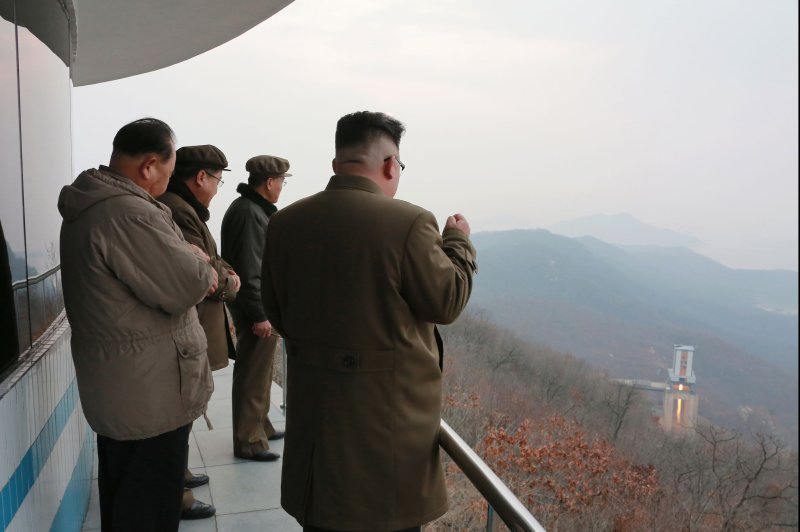Did you ever believe the Warren Commission Report? Me neither. Have you ever heard the name June Cobb? Well, if you can find her…what could she reveal about her time in Cuba and Mexico City?
![image 9.jpeg [CIA soft file on Cobb].jpg](https://static1.squarespace.com/static/589f3f64cd0f68e8d0357567/t/58a8ad859f74561f4db57a28/1487449536399/image+9.jpeg+%5BCIA+soft+file+on+Cobb%5D.jpg) JUNE COBB’S PENETRATION OF CASTRO’S INNER CIRCLE
JUNE COBB’S PENETRATION OF CASTRO’S INNER CIRCLE
What Could a Mysterious U.S. Spy Know About the JFK Assassination?
John F. Kennedy buffs are awaiting the release of documents about June Cobb, a little-known CIA operative working in Cuba and Mexico around the time of the president’s assassination.
Politico: She may have been one of the bravest and best-placed American spies in the history of the Cold War, but few people outside the CIA know the mysterious story of June Cobb.
The existing information in the spy agency’s declassified files depicts Cobb as an American Mata Hari—an adventure-loving, death-defying globetrotter who moved to Cuba to work for Fidel Castro, the country’s newly installed strongman, then found herself recruited to spy for the CIA after growing disenchanted with Castro’s revolution. The era’s rampant sexism is obvious in her job evaluation reports: Cobb’s CIA handlers wrote down speculation about her sex life and her failed romance in the 1950s with an opium farmer in the jungles of South America. And the reports are filled with appraisals of Cobb’s looks, noting especially her fetching blue eyes. “Miss Cobb is not unattractive,” her CIA recruiter wrote in 1960. “She is blonde, has a slender figure, although she has a somewhat hard look, making her appear somewhat older than her 33 years.”
According to another, undated evaluation, she had a “wiry” figure but had been attractive enough to catch the Cuban dictator’s eye. Cobb, the report said, was reputedly “a former girlfriend of Castro’s.” True or not, she was close enough to get a job on the Cuban dictator’s senior staff in Havana in 1960, the perfect perch to spy for the CIA. Cobb’s agency work in Havana and later in Mexico leads us to the most puzzling aspect of her life—that she later found herself drawn deeply into the mysteries of John F. Kennedy’s assassination. After the murder, she reported to her CIA bosses that she had identified a trio of witnesses who could tie Kennedy’s assassin, Lee Harvey Oswald, to Cuban diplomats and spies in Mexico City, where Oswald had traveled just weeks before the assassination.
What did June Cobb know at the time? Historians of the Cold War—and anyone with an interest in JFK’s 1963 assassination and the possibility of Cuban involvement—are on the verge of learning much more about the extraordinary, often bizarre, sometimes tragic life of the American spy who was born Viola June Cobb, the full name that appeared on her birth certificate back home in Ponca City, Oklahoma, in 1927. The National Archives has recently acknowledged that it is preparing to release a 221-page file of long-secret CIA documents about Cobb that—for reasons the Archives says it cannot yet divulge—are somehow linked to JFK’s murder.
The Cobb file is among the most tantalizing of an estimated 3,600 assassination-related documents scheduled to be made public by late October under the 25-year deadline established by the JFK Assassination Records Collection Act. Under the 1992 law, the full library of long-secret files will be released automatically by the National Archives later this year unless President Donald Trump blocks their release on national security grounds. The White House has not signaled what Trump, who for years has promoted mostly baseless conspiracy theories, including about JFK’s assassination, will do.
What we know about Cobb so far comes largely from millions of pages of other documents from the CIA, FBI and other federal agencies that were declassified years ago under the 1992 law. Within those documents are dozens of files that identified Cobb as a paid CIA operative when she worked on Castro’s staff in Havana and later when she moved to Mexico. Some of the documents tie her to a lingering questions about Oswald’s trip to Mexico City in late September 1963, not long before Kennedy’s November assassination. In Mexico, Oswald came under CIA surveillance when he met there with both Soviet and Cuban spies. Previously released documents also show Cobb’s involvement in CIA surveillance of a U.S.-based pro-Castro group, the Fair Play for Cuba Committee, which Oswald championed in the months before Kennedy’s murder.
There is one document about Cobb that has remained completely off-limits to the public all these years: the 221-page file identified as “FOLDER ON COBB, VIOLA JUNE (VOL VII)” on a skeletal index released by the Archives last year. It is one of the 3,600 documents that were withheld from public view entirely in the 1990s at the request of the agencies that originally produced them—in Cobb’s case, the CIA. The index prepared by the Archives shows that, as of 1998, when her file was last officially reviewed, the spy agency said the document was “not believed relevant” to the Kennedy assassination but could do unspecified harm if made public before the October 2017 deadline.
But the history of the assassination has needed to be rewritten since the 1990s, in part because of the CIA’s documented duplicity, which raises the question of whether Cobb’s file could in fact be relevant. A 2013 report by the CIA’s in-house historian acknowledged that the agency had conducted a “benign cover-up” in the years immediately after Kennedy’s assassination in an effort to keep investigators focused on “what the Agency believed at the time was the ‘best truth’—that Lee Harvey Oswald, for as yet undetermined motives, had acted alone in killing John Kennedy.” The agency told the Warren Commission—the panel led by Chief Justice Earl Warren that concluded in 1964 that Oswald had acted alone—that there was no evidence of a conspiracy in JFK’s death. The CIA has also admitted that it failed to tell the commission that the agency had attempted throughout Kennedy’s presidency to assassinate Castro and that Castro knew about the plots, which could have given the Cuban an obvious motive to retaliate. Many of the Castro plots involved CIA operatives working out of Mexico City at the time Oswald visited the city in 1963. In the late 1970s, the CIA refused to help investigators for the House Select Committee on Assassinations find Cobb for an interview about what might have happened to Oswald in Mexico, according to the panel’s declassified files.
Gus Russo, a historian and journalist who has written two widely praised books about the assassination, managed to track down Cobb when she living in New York City more than a decade ago and interviewed her about her spying career. “I have always felt that June Cobb was one of the most fascinating characters I came across over decades of looking at this story,” he said in an interview. “She came across as a female James Bond at a time when there were few, if any, female James Bonds.” He added, “I found her to be completely credible and utterly uninterested in notoriety.” Her whereabouts today are a mystery.
A listed phone number for Cobb in Manhattan is disconnected. Messages sent to her email address, the one Russo used years ago, were returned as “undeliverable.” Phone calls to women with her name in her home state of Oklahoma were unreturned. If still alive, she would have turned 90 this year.
During the 1960s, when her prominent work on Castro’s staff in Havana drew the attention of curious journalists, Cobb granted a few interviews in which she explained how she ended up in Cuba. After dropping out of the University of Oklahoma in the late 1940s, she decided to seek excitement far from the flatlands of Oklahoma and moved to Mexico City, to study at a university there. In Mexico, she fell in love with a fellow student, a young Colombian, who enticed her to join him on an adventure in the jungles of Ecuador, where he hoped to open a business growing poppies for opium production—not clearly illegal in Ecuador at the time. She said she went for several months, only to leave him when he grew addicted to his own product. In a 1962 article about Cobb, the muckraking columnist Jack Anderson reported that, according to U.S. government sources, Cobb had other motives for fleeing: Her boyfriend had taken up with other women in Ecuador, and so—“in a fit of jealousy”—Cobb flew back to the United States and “squealed on him” to American narcotics agents.
Whatever really happened in the South American jungle, Cobb found herself working as a journalist in New York as Castro came to power in 1959. She told Anderson that she had gotten swept up in the initial excitement of Castro’s revolution after meeting the Cuban leader when he traveled to New York shortly after taking the reins, before he acknowledged he was a Communist. Within weeks of the meeting, Cobb said, she was invited to Havana to serve as one of Castro’s principal English-language translators—she spoke fluent Spanish—and to handle his contacts with American news organizations. “I suppose you can call me a sucker for lost causes,” she told Anderson.
She was assigned an office only several hundred feet away from Castro’s and, according to CIA reports, saw him face-to-face regularly. Within months, she said, she found herself disenchanted with the revolution, especially as Castro became more vocally anti-American and drew closer to the Soviet Union. “I do doubt that he was a Communist all along,” she later told congressional investigators. “I think that is one of his many falsehoods.”
In 1960, previously declassified CIA records show, she was recruited to begin spying for the United States. In interviews at the time, Cobb tried to deny ties to U.S. intelligence but acknowledged how close she had been to Castro and his key deputies, including his brother Raúl and guerilla leader Che Guevara. CIA files describe Cobb as having had an adventurous love life—she is “promiscuous,” her American handler in Mexico said flatly—but make no final judgment about whether she had a physical relationship with the Cuban leader.
“Her association with Fidel Castro and his entourage has been another shattered ‘dream,’ one of a whole series in her life,” her CIA recruiter wrote at the time, explaining her motives for becoming a spy. “Miss Cobb has undergone much emotional stress in her life and is no longer sure that the revolutionary movement she was so idealistically motivated by a few months ago is the right thing.” Previously declassified CIA document show that Cobb’s information was valuable in preparing the spy agency’s detailed psychological profiles of Castro and his deputies and in monitoring their activities.
A photograph of June Cobb from an August 1962 profile in Parade magazine. | Parade Magazine
By choosing to spy, the records show, Cobb knew she was risking her life, especially after another American prominent in Castro’s government, William Morgan of Toledo, Ohio, who had fought alongside Castro’s army in the revolution, was charged with treason in 1961 by his former Cuban allies and executed by firing squad. “He was a boy with ideals,” Cobb said later of Morgan.
Fearing she faced a similar end, Cobb decided to leave Cuba shortly after Morgan’s arrest and was transferred by the CIA to Mexico City, where she took on assignments monitoring Cuban agents, as well Mexicans who were sympathetic to Castro’s government—work that would eventually draw her into investigations of the Kennedy assassination.
Cobb figures prominently in one of the greatest of the unsolved mysteries about Oswald’s trip to Mexico weeks before the assassination—whether he was in contact there with Cuban or Soviet agents who knew he had spoken openly about killing Kennedy, possibly as an act of retaliation for JFK’s efforts to overthrow Castro’s government. Previously declassified government files suggest that, at one point, Oswald marched into the Cuban embassy compound in Mexico City and announced loudly: “I’m going to kill Kennedy.”
According to other declassified files, Cobb reported to the CIA’s Mexico City station in October 1964, nearly a year after JFK’s assassination, that she had learned from a prominent Mexican writer and two other Mexican sources that they had all seen Oswald at a dance party during his trip the year before that was also attended by Cuban diplomats and others who had spoken openly of their hope that Kennedy would be assassinated. Cobb’s sources said Oswald had been at the party in the company of two other young American men, who appeared to be his traveling companions and whose identifies have never been established. The questions raised by Cobb’s reports were obvious: Had any of those people encouraged Oswald to murder JFK or offered to help him escape after the assassination? (Nothing in the previously released documents involving Cobb support theories that Castro personally ordered Kennedy’s death.)
Cobb speaks with Amazonian natives in Ecuador. | Parade Magazine
The CIA’s Mexico City station, its files reveal, was determined to dismiss Cobb’s report, perhaps eager to have the official record show that Oswald was a lone wolf whose plans to kill Kennedy could never have been foiled by the spy agency’s officials. Cobb’s key witness, the Mexican novelist and playwright Elena Garro, was interviewed by the FBI, but the CIA disparaged her account, even though other witnesses would come forward to support it. Other leads offered by Cobb were never pursued. And in any case, by the time all of this came out, it was too late for the Warren Commission to act: Two weeks before Cobb’s information landed with her CIA handlers in Mexico, the commission had issued its final report in Washington and shut down its investigation.






 UPI
UPI Tillerson at the DMZ lexpress.fr
Tillerson at the DMZ lexpress.fr


